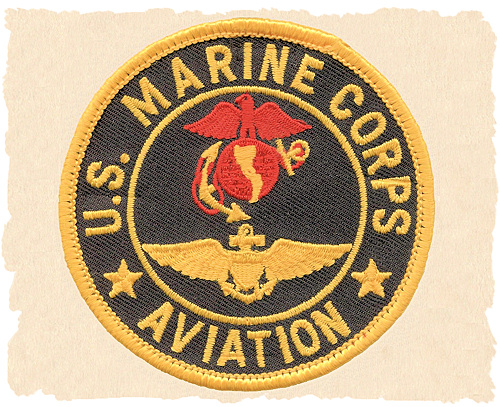VMF-224 Scrap Book
Roi-Namur, Marshall Islands
Target - Wotje
Target area photos of Wotje from the William O. Boshart collection.
The fighter-bomber technique was a notable innovation produced by the cat-and-mouse war in the Marshall's. Marines used the enemy targets for experimental purposes in developing new tactics and weapons and improving old ones and, incidentally, turning the surviving Japanese crews into some of the most accurate AA gunners in the Pacific. In the spring, the Corsairs had accompanied the bombers as fighter escorts, to strafe targets ahead of bomb runs. Soon, with fighter protection obviously unneeded and strafing runs hardly worth the trip for the Corsairs, the fighter squadrons tinkered with the idea of using the fast F4U as a bomber.
In improving the striking power of its own fighter squadrons, the Fourth Marine Air Wing was so successful with its fighter-bomber technique that it was adopted in total by all of naval aviation and contributed materially to the increased potency of carrier warfare in the later stages of the Pacific war.
Text from the book "Devilbirds, The Story of USMC Aviation in WWll" page 153.
Marine squadrons - Corsairs, Dauntlesses, and Hellcats - mauled the atoll targets. They micrometered their precision bombings to a point where a hit was not registered unless the bomb struck inside a 30 foot circle. On more than 11,000 sorties in the period, they rocked the enemy islands with 3,300,000 pounds of bombs and serrated them with millions of rounds of machine-gun ammunition.
Antiaircraft fire during the first months was blistering in its accuracy against the low-altitude attacks of the Marines. Thirty-six planes were shot down in six months. Of their crews, 17 pilots and three enlisted men were lost while 16 officers and 5 rear-gunners were rescued in spectacular operations by the flying boats and destroyers circling the targets for just that purpose.
Text form the book "Devilbirds, The Story of USMC Aviation in WWII" page 152.
The Fourth Marine Air Wing in the Central Pacific has had opportunity to test fighter-bombing technique daily in large scale operations for the past nine months. Over 75 percent of the targets have been 50 feet or less in diameter whereas the normal dive bomber target is 200 feet in diameter. These targets in the main were Japanese gun positions which were eliminated one by one by fighter bombers. The Marine squadrons involved tried several techniques but the most effective for the Corsair seemed to be a 70-80 degree dive at high speed. The Fourth Air Wing also developed low-altitude attacks at small targets, usually Japanese blockhouses 50 feet square and only 20 feet high, which have also been eliminated by bomb-carring Marine fighters.
Not all fighter-bombers were flown by Marines. But all who manned fighter-bombers learned from the textbooks written by the Marines, chiefly over the atolls with the cacophonous names: Wotje, Maloelap, Mille and Jaluit.
Text from the book "History of Marine Corps Aviation in WWll" page 246.
While VMF-224 flew missions against many of the Japanese occupied islands comprising the Marshall Islands, Wotje Island was the most common target to be attacked by Marine aircraft based at Roi-Namur. Wotje was located 164 miles to the east of Roi-Namur with the average combat hop lasting approximately 3 hours. In addition to these combat missions, pilots were regularly assigned to combat air patrol duty as well as being on ready alert status for both Roi-Namur and Kwajalein.
New items will be added as they become available - please come back.
<- (click to view)
<- (click to view)
<- (click to view)
<- (click to view)
<- (click to view)












